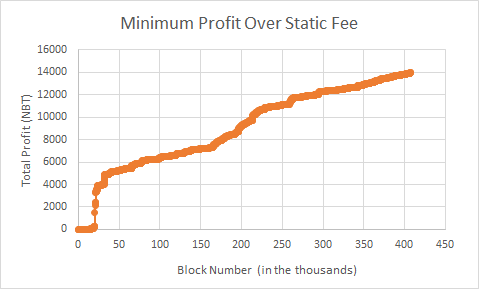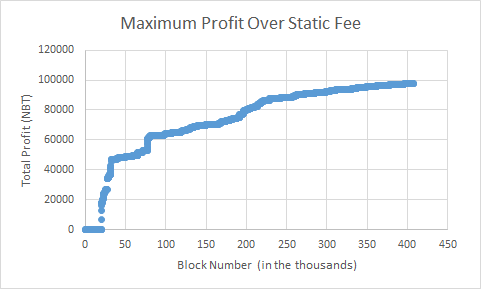Motion RIPEMD160 hash: tbc
=##=##=##=##=##=## Motion hash starts with this line ##=##=##=##=##=##=
The variable transaction fees, implemented as per motion 7283C71D2BDDC3B71E2EB7CD0693E28E3665BF66, will be replaced with variable, volume dependent transaction fees. Where shareholders would previously be voting on the flat fee, they will instead vote on a proportionality constant for the fee (labeled ‘p’). Every output to a transaction with a target address that is different from any source address will be summed (sum labeled ‘V’) and the transaction will be charged the following fee:
Fee = p * Maximum{ 0.01 NBT / KB, f(V) }
f(V) is a volume dependent function to be determined by future motions. In the event that no additional motion is passed before implementation, the following function % function will be used:
f(V) = V * 0.01 NBT
If any output has a target address that is equal to its source address, the transaction will be charged an additional p * 0.01 NBT / KB fee.
A chunking service will be added to the standard wallet software such that incoming transactions can be divided into fibbonacci chunks. When avatar mode is turned off and the chunking service is not turned off, the wallet will divide any incoming transaction from an outside account that is 10 NBT or larger into several outputs relating to the fibbonacci numbers. For example, a 100.13 NBT output would divide into outputs of size: 1, 2, 3, 5, 8, 13, 21, 34, 13.13 NBT. When sending outside of avatar mode, the wallet will seek to minimize change outputs
A reward of 10,000 NBT will be offered for the successful implementation of this fee and the wallet upgrade.
=##=##=##=##=##=## Motion hash ends with this line ##=##=##=##=##=##=

